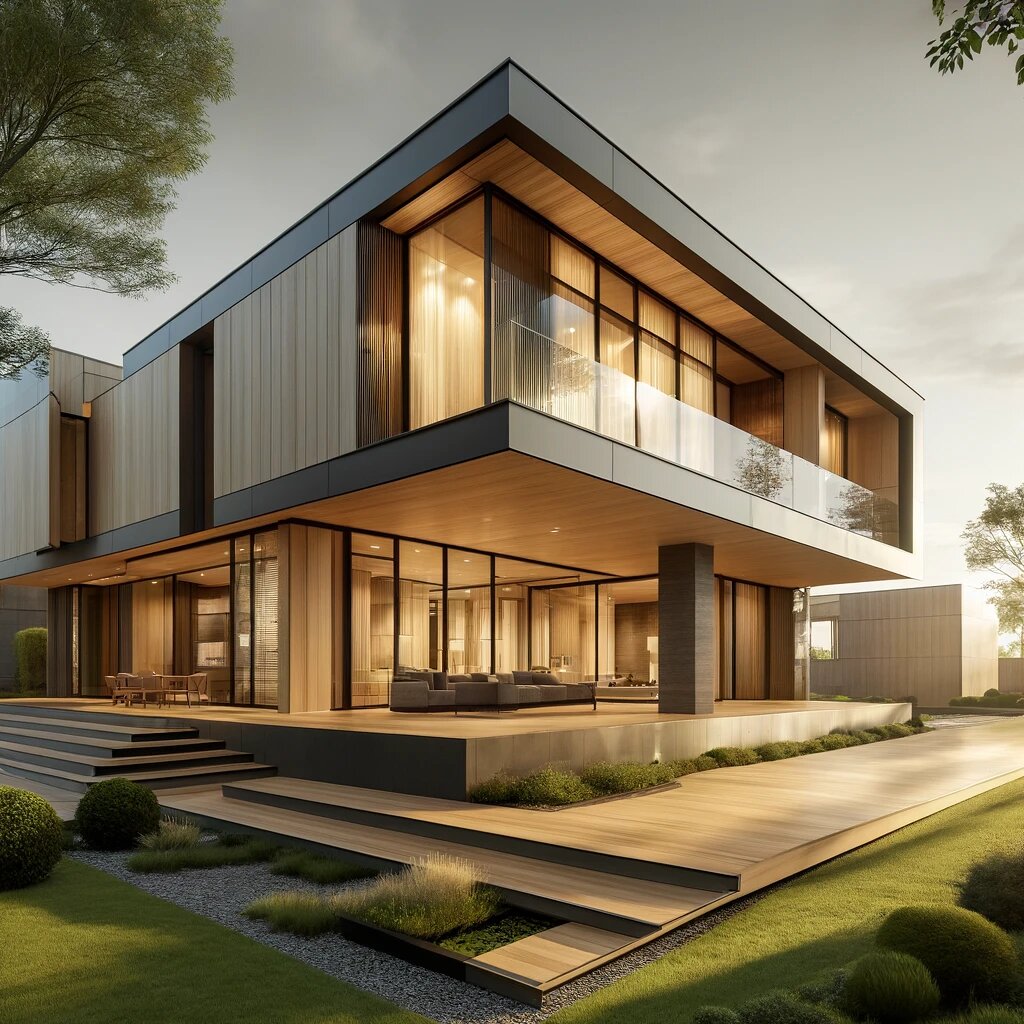The construction landscape is continually evolving, with a growing emphasis on sustainability and technological innovation. Engineered Wood Products (EWPs), a cornerstone of this evolution, are increasingly favored in the industry for their robust performance and eco-friendly qualities. These advanced materials not only meet the rigorous demands of modern construction but also offer a compelling alternative to traditional building materials.
In this blog post, we will delve into the myriad advantages of Engineered Wood Products, shedding light on how they stand out as a superior choice for contemporary building projects. From their enhanced structural integrity to their environmental benefits and design flexibility, we’ll explore why EWPs are becoming an indispensable component in the construction world.
Advantages of Engineered Wood Products
Enhanced Structural Integrity
Engineered Wood Productss are renowned for their strength and durability, which often surpasses that of traditional wood. Their engineered properties allow for greater load-bearing capacities and minimize common issues like warping, shrinking, or splitting. For instance, Laminated Veneer Lumber beams can support heavy loads over longer spans without bending, making them ideal for expansive spaces.
Environmental Benefits
One of the most compelling reasons to choose Engineered Wood Productss is their environmental advantage. These products are typically made from younger, faster-growing trees that are cultivated on managed timberlands, helping to preserve older forests. Additionally, the manufacturing process makes efficient use of raw materials, reducing waste. Engineered Wood Products also contribute to a building's energy efficiency, as they require less energy to produce than steel or concrete and have a lower carbon footprint.
Design Flexibility and Aesthetics
Engineered Wood Products offer unmatched flexibility in design, accommodating a wide range of architectural styles and customizations. Their ability to be molded into various shapes and sizes allows architects to innovate beyond traditional constraints. Moreover, Engineered Wood Products provide a warm, natural aesthetic that can enhance the visual appeal of any building.
Cost-Effectiveness and Efficiency
In terms of cost, Engineered Wood Products are competitive with traditional materials but offer superior performance and longevity. Their prefabricated nature speeds up construction times significantly, reducing labor costs and minimizing errors on site. Over the long term, buildings constructed with Engineered Wood Products tend to have lower maintenance costs and a longer lifespan, providing added value to property owners.
Challenges and Considerations
Cost Implications
While Engineered Wood Products offer long-term benefits, the initial investment can be higher compared to traditional lumber. The manufacturing process, which involves adhesives and controlled conditions, adds to the cost. However, these costs may be offset by reduced labor and installation time, as well as decreased waste. It's essential for construction managers and buyers to analyze the total life-cycle cost of using Engineered Wood Products versus traditional materials to make informed financial decisions
Fire Resistance and Safety
One significant challenge with EWPs, like many wood products, is their performance in fire conditions. Although they can be treated with fire retardants, they generally do not perform as well as non-combustible materials like steel or concrete in high-temperature scenarios. Building codes may also limit the use of EWPs in certain types of construction due to these concerns. It’s crucial for designers to consider these factors and comply with local fire safety regulations when incorporating EWPs into their projects.
Moisture and Durability Concerns
Engineered Wood Products are susceptible to moisture, which can affect their structural integrity and longevity. Prolonged exposure to water can lead to degradation, such as swelling, mold, or even structural failure. To mitigate these risks, proper installation, maintenance, and the use of moisture-resistant coatings are essential. Additionally, in climates with high humidity or frequent rain, special considerations must be taken to ensure the longevity of Engineered Wood Products.
Technical and Design Limitations
While Engineered Wood Products are highly versatile, there are technical and design limitations to consider. For example, certain customizations and shapes can be challenging to achieve with Engineered Wood Products compared to materials like steel, which can be molded into virtually any form. Architects and engineers need to be aware of these constraints and may need to collaborate closely with manufacturers to ensure that the material meets the specific needs of their project.
Environmental and Health Considerations
Although Engineered Wood Products are environmentally friendly due to their efficient use of wood and potential for sustainability, the adhesives used in their production can sometimes emit volatile organic compounds (VOCs). These emissions can impact indoor air quality and may be a concern in residential or sensitive environments. Selecting EWPs with low-VOC adhesives or those certified by environmental standards can help mitigate these concerns.
Future Prospects and Technological Advancements
The future looks bright for EWPs, with continuous improvements in manufacturing processes and material properties. Innovations such as enhanced fire-retardant treatments and moisture-resistant coatings are making Engineered Wood Products suitable for a wider range of climates and building types. The ongoing development of smarter, more sustainable adhesives also promises to reduce the environmental impact of these products further.
Conclusion
Engineered Wood Products represent a major step forward in the evolution of building materials. With their superior strength, environmental credentials, and aesthetic flexibility, Engineered Wood Products are set to play a crucial role in the future of construction. As we continue to seek out more sustainable and efficient building solutions, EWPs offer a promising pathway towards achieving these goals.
If you’re planning a construction project, consider the many benefits of Engineered Wood Products. Not only will you be choosing a material that is durable and aesthetically pleasing, but you will also be making a choice that benefits the environment. Share your thoughts or experiences with Engineered Wood Products in the comments below!



